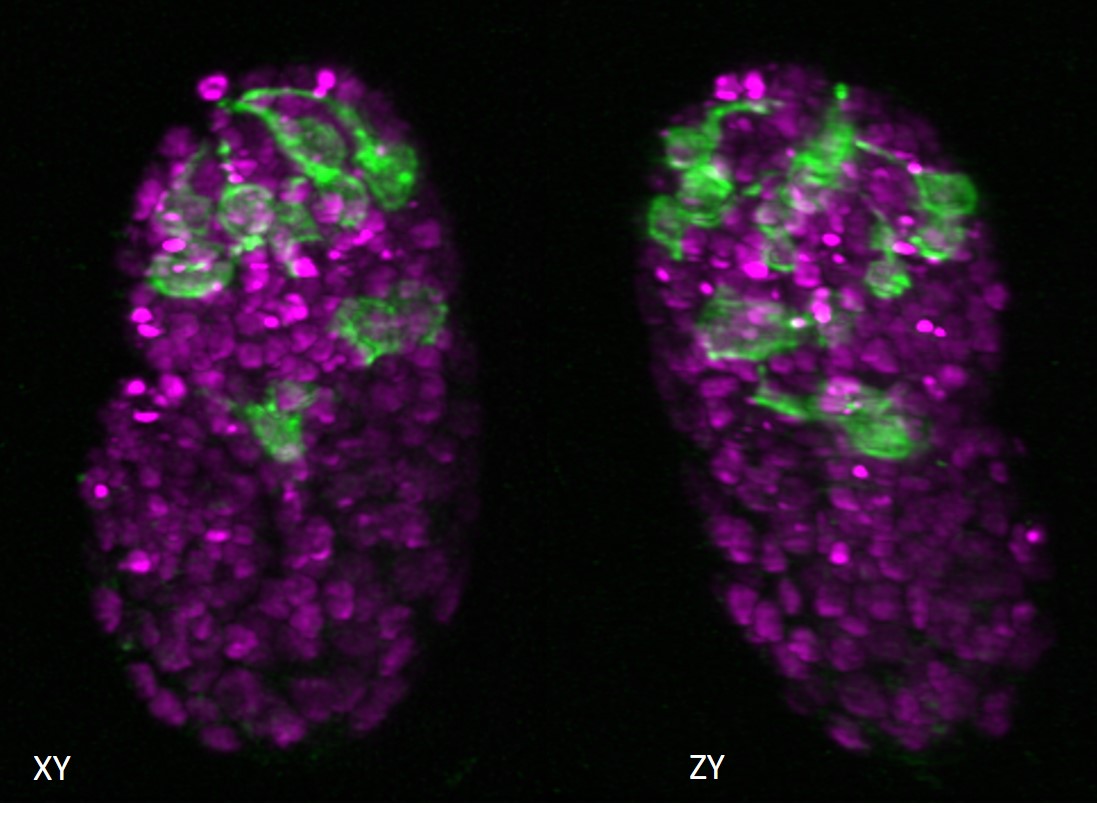The National Institutes of Health has awarded research funding for seven pilot projects developing early-stage but innovative neurotechnologies. Innovative projects would enable new medical devices to diagnose and treat acute and chronic disorders, from neuropathic pain to mental illness. The one-year, $100,000 awards are the first for a new program within the NIH Plan for Neuroscience Researchcalled Medical technology blueprint.
“The Blueprint MedTech program is building a translational ecosystem to accelerate new solutions for nervous system disorders across a wide range of unmet needs,” said Michael Wolfson, Ph.D., program director at the National Institute of Biomedical Imaging and Bioengineering (NIBIB). “These pilot projects offer potential interventions to address motor impairment, stroke, pain, nerve injuries, obstetric monitoring, mental illness and rare diseases.”
The MedTech program is based on the NIH Blueprint for Neuroscience Research collaborative framework, which includes the NIH Office of the Director and 12 NIH institutes and centers that support nervous system research. Following initial pilot awards, NIBIB now manages the MedTech incubation center program, incorporating many lessons learned from NIH’s Rapid Acceleration of Diagnostics (RADx®) technology program, which brought 46 new rapid COVID testing products to market in two years.
The MedTech call for applications garnered more than 150 responses, at least three times more than expected, according to Steven C. Schachter, MD, academic director of the Boston-based Consortium for Improving Medicine with Innovation and Technology (CIMIT), which the NIH hired to manage the application and pilot review. “Selected applicants prevailed through progressively challenging assessment gates (pre-proposal, full proposal, in-depth review) to reach this award stage.”
In addition to funding, MedTech will provide a range of specialized support from mentors who bring decades of experience in commercializing neurotechnology devices. Project teams will learn to navigate the commercial, manufacturing and regulatory aspects of developing their respective technologies and prepare to build human-level prototypes. While the science behind each technology has met rigorous standards, clinical studies will be needed before it is approved for use in patients. “Our hope is that with our planned complementary funding opportunities, the technologies will be ready for first-in-human studies in two to five years,” Wolfson said.
Blueprint MedTech Pilot Project Funding Recipients:
University of Minnesota, Minneapolis
Project title: Neurostimulation to improve human cognitive control and treat serious mental illnesses
A novel method to optimize neurostimulation therapy for the treatment of people with mental disorders, including severe depression and anxiety. The system will allow doctors to select parameters for deep brain stimulation that target specific brain circuits identified as areas of dysfunction and restore patterns of neural activity that are necessary for healthy cognitive function and control.
John Hopkins University, Baltimore
Project title: Intrapartum monitoring of vulnerable fetal brain and labor progress using ultrasound/photoacoustic sensor
A hybrid ultrasound and photoacoustic device that will directly monitor the potential for fetal distress during childbirth, providing continuous updates on the status of fetal brain health and cervical dilation. The device will provide non-invasive transcranial photoacoustic sensing to detect problems in oxygen delivery and blood flow to the fetal brain that could lead to permanent brain injury due to hypoxic-ischemic encephalopathy and stroke. The use of the device will also simplify the current clinical protocol for monitoring delivery in case of frequent cervical palpitations.
John’s Hopkins University School of Medicine, Baltimore
Project title: Viopsia: a non-invasive imaging device to modernize the treatment of peripheral nerve injuries
A portable photoacoustic imaging device that will provide high-resolution images of peripheral nerve structures and allow quantitative evaluation of viable axons within nervous tissue, where nerve damage has occurred due to trauma or other causes. Noninvasive technology could better inform clinical decisions, improve surgical outcomes, and enable postoperative monitoring of nerve regeneration. The device, called Viopsy, aims to modernize the treatment of peripheral nerve injuries.
Albany Medical College, New York
Project title: External low-intensity focused ultrasound device for the treatment of neuropathic pain
A low-intensity focused ultrasound device for the non-pharmacological treatment of aggravated chronic pain. This condition, also called neuropathic pain, when treated with opioid-based medications, has led to addiction in some patients. The device uses a hand-held probe to direct low-intensity ultrasound to the dorsal root ganglia, small bundles of nerves along the spine that control pain signals reaching the spinal cord.
University of California, Davis
Project title: A simpler and more accurate non-radioimmunoassay to diagnose myasthenia gravis
A laboratory assay to simplify and improve accuracy in the diagnosis of the chronic autoimmune disorder, myasthenia gravis, which affects the voluntary muscles of the body, especially those that control the eyes, mouth, throat and extremities. The new assay, an alternative to one that uses radioactive materials and the human acetylcholine receptor, targets only pathogenic antireceptor antibodies and can help doctors better determine disease status and more quickly determine appropriate treatment.
Neura Stasis, Houston
Project title: Transcutaneous stimulation of cranial nerves to mitigate brain damage during acute ischemic stroke
Non-invasive stimulation of cranial nerves during acute ischemic stroke allows for successful rerouting of blood flow in the affected region of the brain. Neurostimulation controls the activation of two cranial nerves, the trigeminal and vagus, activating the body’s innate anti-inflammatory and oxygen-conserving reflexes and stopping the progression of brain damage. The neurostimulation device is essential to achieve a reduction in brain injuries and patient disability.
Boston University, Sargent College
Project title: The reNeu propulsion neuroprosthesis to restore walking after neurological injury
Slow, unsteady gait is a common result of a neuromotor injury or neurodegenerative disease. The reNeu propulsion device is a soft exosuit that allows the heel-to-toe movement necessary for the propulsion phase of gait. It uses algorithms that transform biosensor data into appropriately timed electrical stimulation pulses that can augment and rehabilitate the muscles used to support and propel the body when walking, helping people with neurological injuries walk with better gait and speed.
The pilot projects are funded by NIBIB grant U54 EB015408.
About Blueprint MedTech: Medical technology blueprint is an NIH incubator that aims to address the challenges innovators face in the process of developing cutting-edge medical devices to diagnose and/or treat nervous system disorders. It is a constituent program of the NIH Plan for Neuroscience Researcha cooperative effort between the NIH Office of the Director and 12 of the NIH institutes and centers that support nervous system research. By pooling resources and expertise, Blueprint supports transformative neuroscience research and the development of new tools, training opportunities, and other resources to assist neuroscientists.



